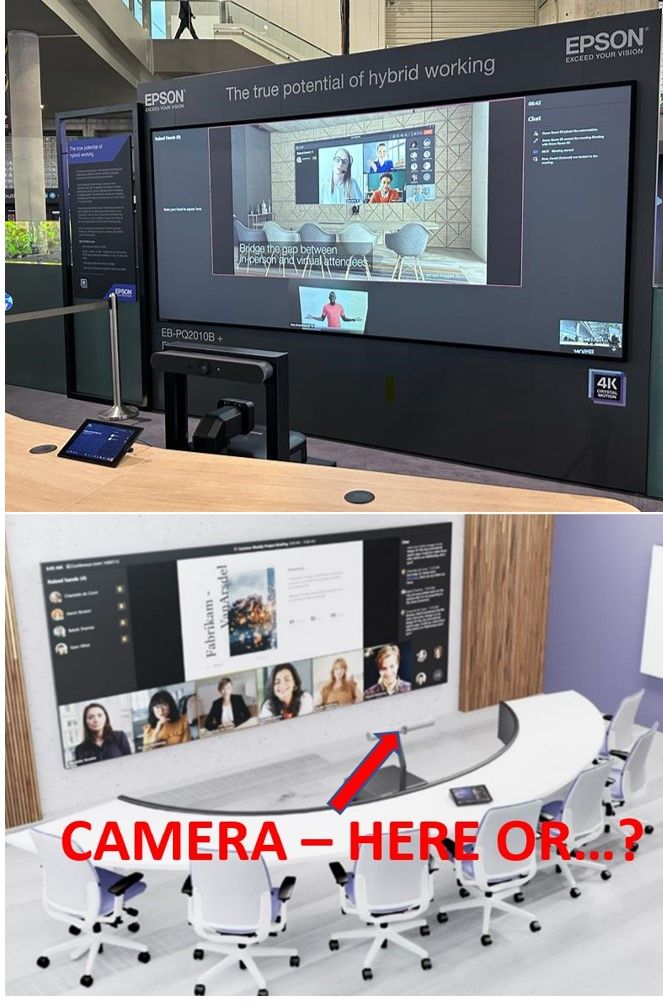MTR cameras - size and positioning
How do cameras relate to display size and position in Microsoft Teams Rooms? What does this mean for camera specifications? Quite a lot, actually!

Having some sober reflections (!) after ISE, and spending several hours sitting in front of our new MTR Front Row display on the Epson booth, strengthened the case for where the design case is moving.
Step one, image size. It doesn’t matter whether it’s Front Row at 21:9 or regular 16:9 - the basic fact is we need a step change upwards in display size. In all hybrid applications there’s a lot of content, data and remote participants that need fitting on the same screen - at the same time.
Step two. Camera size and position. If the camera is small, such as Huddly L1, then it can be placed in plain sight, in front of the screen, at or near seated eye height. To facilitate that move, any manufacturer who can separate lens and sensor from the other electronics to miniaturise it further, will have have a natural advantage from now on.
Step three - a new step. For MTR Front Row (and updated Cisco Telepresence-type) room layouts, we can move to lower baselines (distance from floor to bottom of image). This allows a bigger image size; it allows the bottom row of remote participant windows to get closer to lifesize - and it brings image centreline closer to seated eye height.
All this is facilitated by the move to ALR projection, the principle of using black projection screens with 3-chip (3LCD in practice), such as the 150” MTR Front Row display we premiered on the Epson booth.

Posted: 16th February 2023